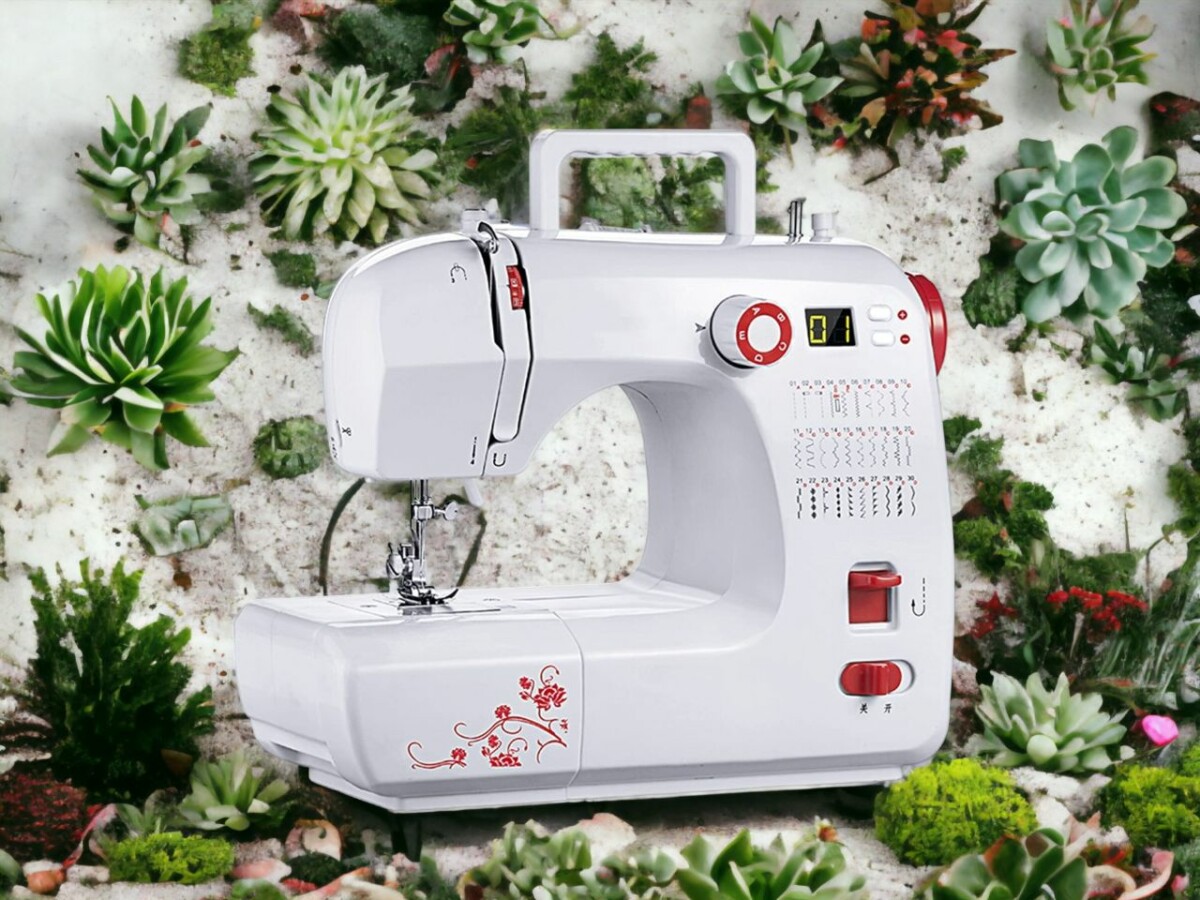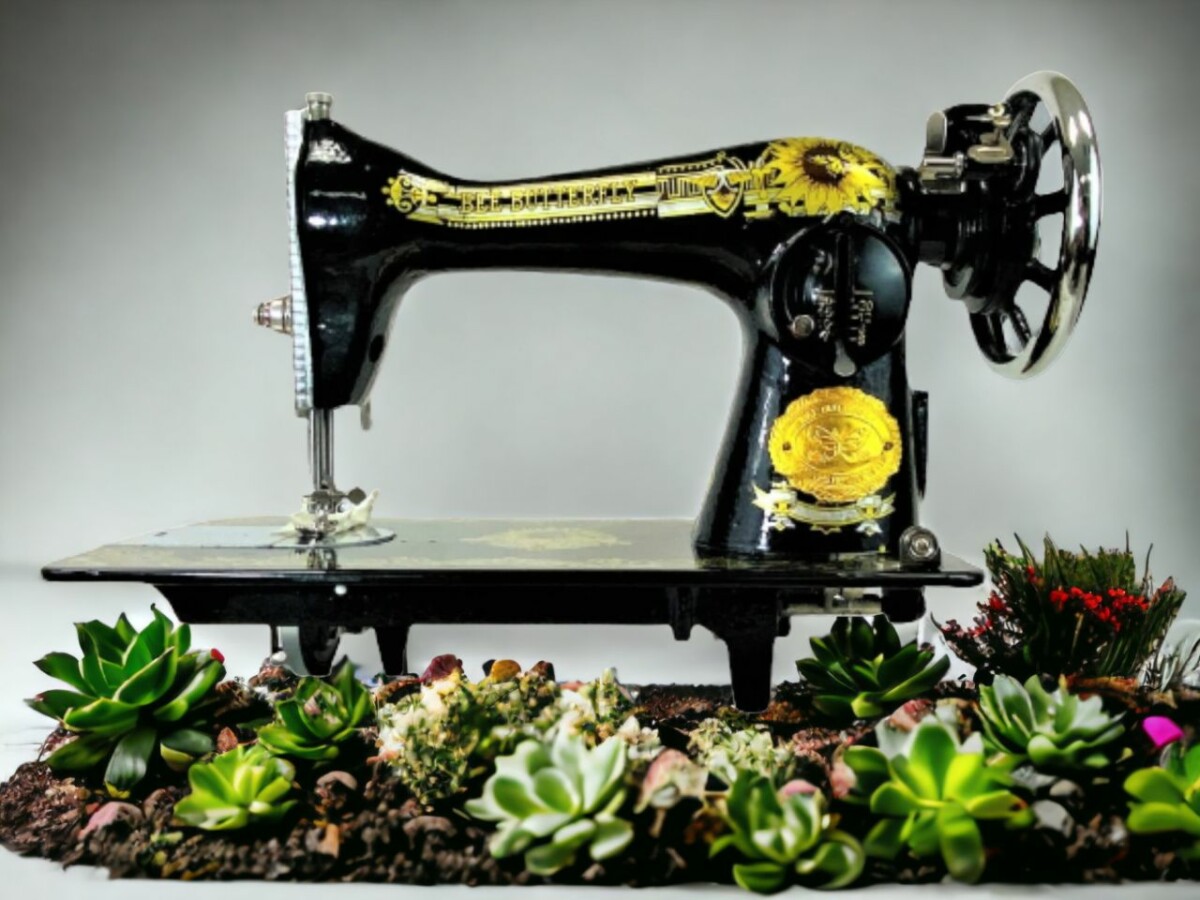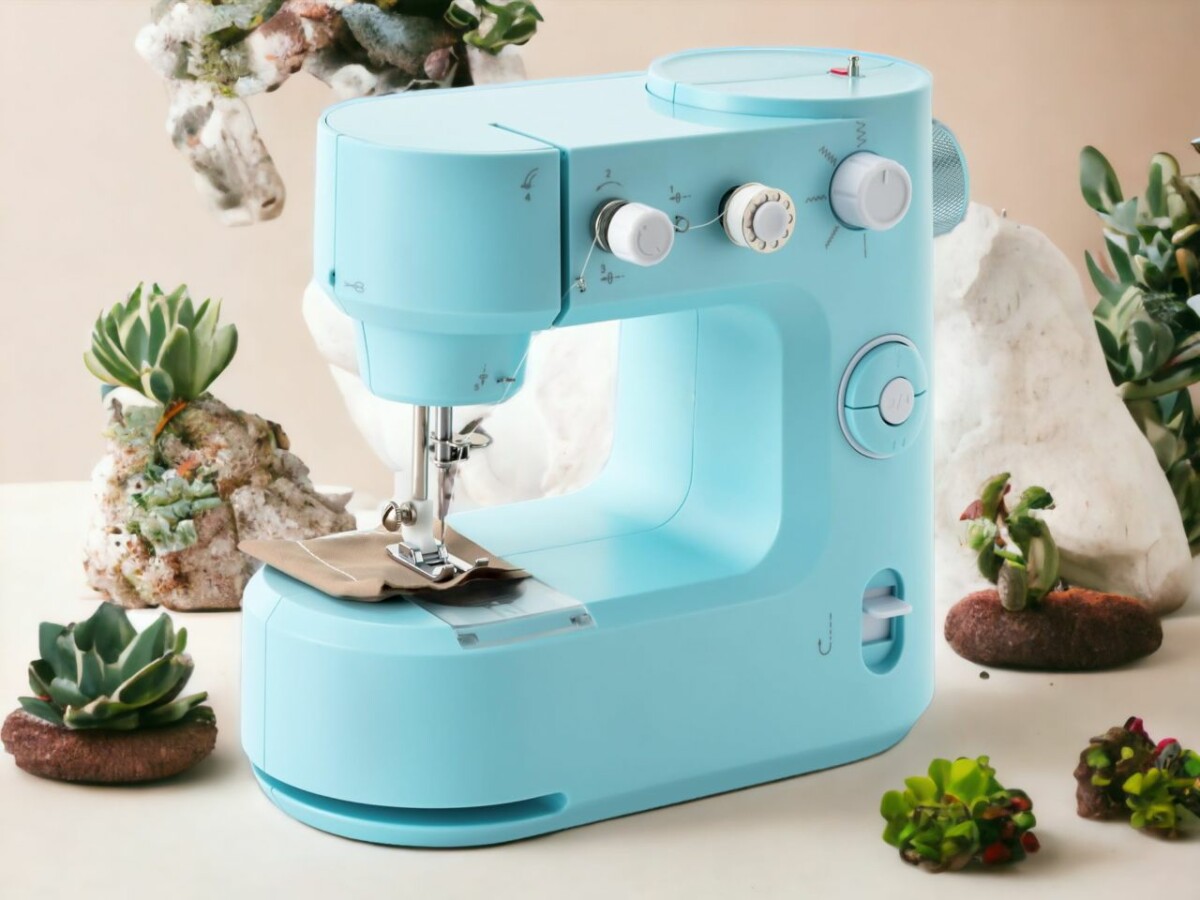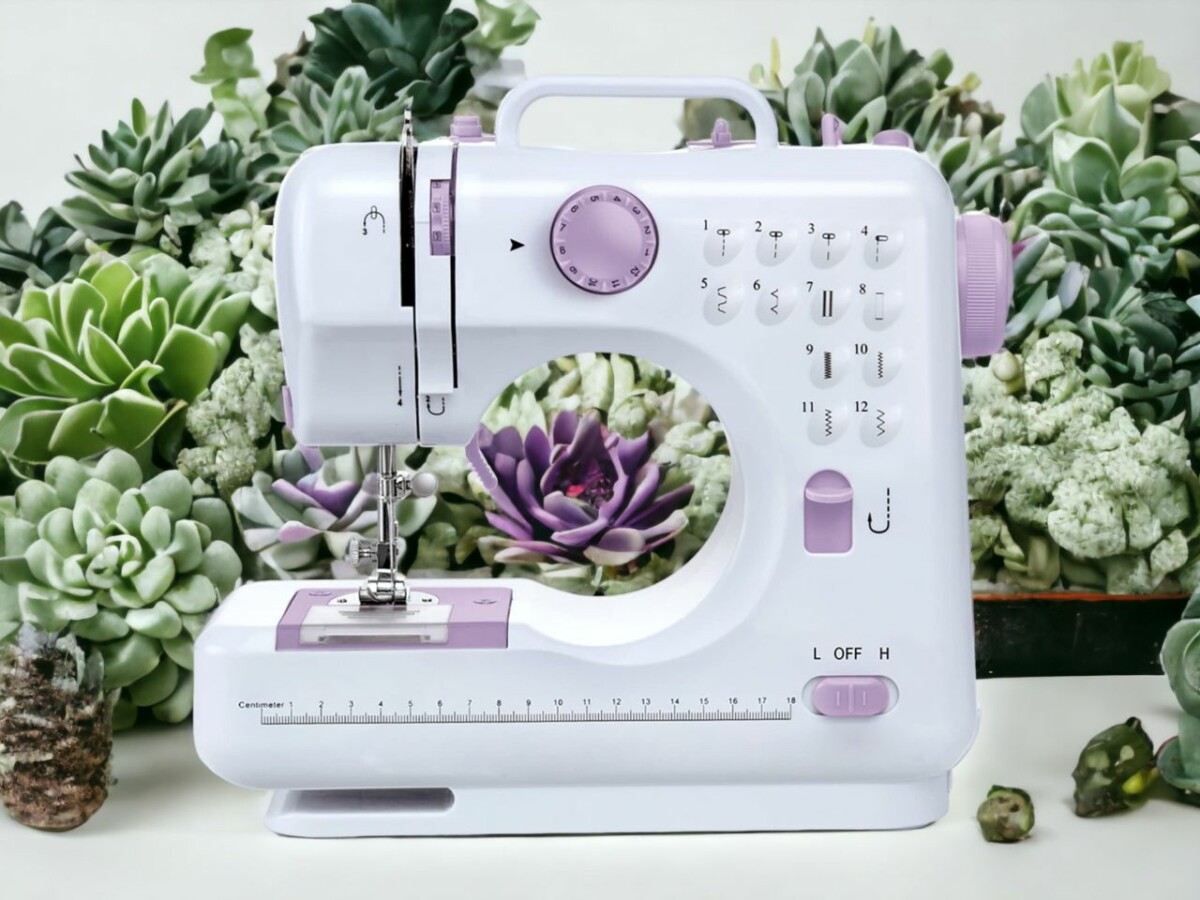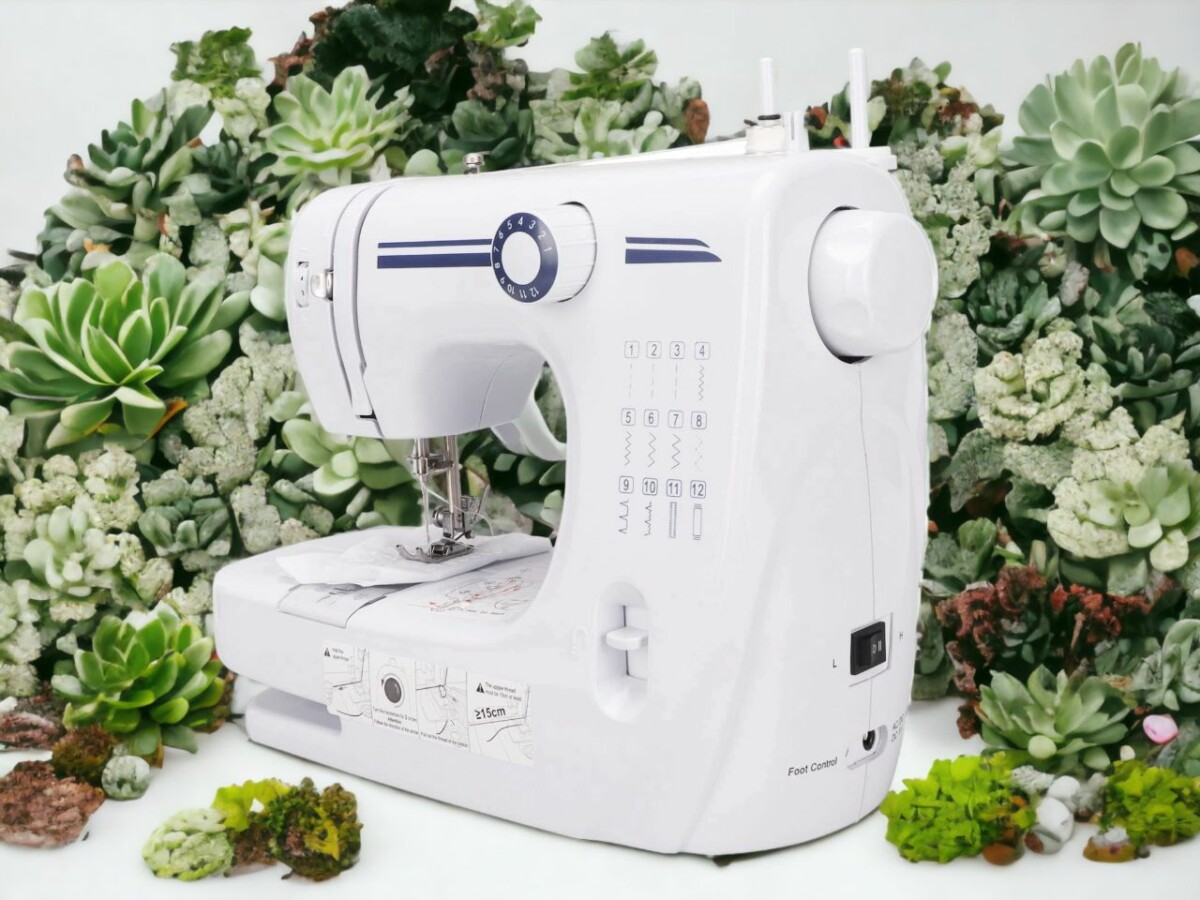Just ripped open the packaging of your brand spanking new sewing machine, eager to get cracking on your debut project?
Hang on a sec! Aren’t you curious if your sewing machine comes with its own thread? Think of it as the lifeblood of your creative endeavors.
Let’s go on a bit of a journey to clear up this question, delve into the different kinds of threads you might need, and help you navigate the labyrinth of shopping for and picking the perfect thread.
Buckle up, this is going to be a wickedly precise adventure.
Does Thread Come With A New Sewing Machine?
Normally, sewing machines won’t come with thread included. But you can probably expect a little starter kit to come with your machine, which might contain a few essential supplies. However, when you’re out buying thread for your machine, make sure it’s top quality. Using low-grade thread can mess up your machine’s tension and even lead to breakage. Keep in mind that the type and weight of the thread matter, and it should align with the fabric and project you’re tackling.
Before you take the plunge into your fresh new pastime, you gotta know what’s actually in the box when you get a sewing machine. Typically, they throw in a bunch of extras – think needles, bobbins, a how-to manual, and even a cover to keep the dust off. But don’t expect to find thread – that’s usually not part of the package, so you’ll have to grab some on your own.
Keeping your machine in tip-top shape is key if you want it to keep humming along. Regular TLC like oiling and cleaning will extend its life and keep you stitching without a hitch. When you’re making the purchase, check out the warranty options. A solid warranty can be a real lifesaver, saving you from coughing up big bucks for repairs down the road. It’s a case of better safe than sorry.
The Importance of Thread in Sewing Projects
When you’re knee-deep in sewing projects, you’ll quickly learn that thread is far from just some extra add-on. It’s the linchpin of each and every stitch you craft. The strength of your thread is a big deal; if it snaps or starts to fray, all your effort could come undone in a flash. Hence, it’s super important to pick a thread that’s sturdy and top-notch. Don’t be stingy when it comes to this vital part; it plays a huge role in how long your handmade items will last.
Also, let’s talk about thread storage. It’s key to keep your thread in the best condition. You’ve got to keep it safe from dust and sunlight, ideally somewhere cool and dry. Heat and humidity can mess with the strength of your thread, and too much sun can lead to color fade. Try using a thread box or rack for easy access and a neat workspace.
As you can see, thread’s role in sewing projects is pretty substantial. It’s a total game-changer, and its importance can’t be emphasized enough.
Types of Thread You May Need for Sewing
Picking the right thread for your sewing gig is totally key. You’ve gotta know the ins and outs of the different types of thread materials since each has its own pluses and minuses.
And don’t forget about thread thickness, it’s a game-changer. It can make or break the strength and look of your stitches. Trust me, you don’t want to mess this up.
Choosing the Right Thread
When you’re diving into your next sewing project, don’t forget to take a hot minute to think about your thread choice. It’s not just about picking one that matches the color of your fabric, there’s way more to it. Thread lifespan is super important, not all threads are on the same level. Some are just built tougher and last longer than others, you know?
Take polyester threads, for example. These bad boys are famous for their staying power. They just don’t give up – they’re all about resisting sunlight and high heat, which are the main culprits behind thread wear and tear.
Then you’ve got these specialty threads, designed specifically with certain projects and fabrics in mind. Metallic threads? They’re your go-to for when you want to add a little bling to your stitching. And if you’re working on a blind hem or quilting, invisible threads are your secret weapon. They’re like the ninjas of the sewing world.
Thread Material Differences
Before you dive headfirst into your sewing adventure, it’s super important to get the lowdown on thread materials. You’ve gotta figure out what thread is gonna be the MVP for your project. This is where the strength of your thread really comes into play. If you’re working on something that’s gonna get a lot of action, like clothes or upholstery, you’re gonna need a thread that’s tough as nails.
Now, let’s talk about the whole synthetic vs. natural thing. Natural threads, we’re talking cotton or silk here, are a dream for delicate fabrics. But, they mightn’t have the stamina of their synthetic cousins. Synthetic threads, like polyester or nylon, are the heavy lifters here. They pack a mean punch in terms of strength and durability, making them a top pick for heavy-duty fabrics.
Thread Thickness Considerations
In the world of sewing, thread thickness isn’t just a minor detail—it’s a game changer. The thickness of the thread you’re using can seriously make or break the success of your sewing project. It’s not just about the final aesthetic, but also the thread’s lifespan and how efficiently you can store your threads.
Here are some key pointers to keep in mind while picking out thread:
- Fabric Weight: This one’s a no-brainer. Heavier fabrics call for thicker threads, while your more delicate fabrics will thank you for using thinner ones.
- Thread Durability: Thicker threads are the real MVPs when it comes to durability. They’re your go-to for projects that need to withstand some serious wear and tear.
- Stitch Visibility: If you’re looking to make a statement with your stitches, thicker thread is your best bet.
- Thread Storage: Keep in mind, thicker threads are a bit of a space hog, so make sure you’ve got enough room for them.
In a nutshell, choosing the right thread thickness can take your sewing game from basic to boss level. Trust me, it’ll make the whole experience a lot more streamlined and, dare I say, fun.
Where to Purchase Sewing Machine Thread
Looking for some killer sewing machine thread? You’ve got a world of choices at your fingertips, both online and in physical stores. Shopping online for thread is super easy and lets you browse a huge variety of thread types, weights, and colors. Sites like Amazon and eBay, not to mention specialty craft stores, have mega selections to choose from.
If you’re more of a touch-and-feel shopper, hit up craft stores like Joann’s or Michaels. There’s something satisfying about being able to physically see the thread and feel its texture before deciding to buy it. It’s like pre-gaming the actual sewing project.
And hey, while you’re on this thread shopping spree, don’t forget to think about storage solutions. Keeping your threads organized by color, type, or weight can make your sewing sessions a whole lot smoother. Something like boxes, racks, or thread towers could be your go-to for keeping your sewing space neat and tidy. Trust me, a well-organized sewing space is a game-changer.
And remember, the thread you choose can make or break your sewing project. So choose wisely, my friend.
Tips for Choosing the Right Thread for Your Sewing Machine
Picking the right thread for your sewing machine is way more than just matching colors – it’s all about the fabric and girth too.
There’s a whole smorgasbord of materials out there, each rocking its own pros and cons.
Keeping an eye on thread thickness and making sure your color game is on point can totally up your sewing project’s game.
Thread Material Selection
Choosing the right thread for your sewing machine isn’t as easy as you might think. It’s not just about picking the prettiest color – you’ve got to think about the durability of the thread and whether you need any fancy specialty threads. So, let’s break it down to help you make the best decision.
First up, you’ve got to think about the type of thread. If you’re working with lighter fabrics, cotton thread is your best bet. But for heavier stuff, you’re gonna want to go with nylon or polyester.
Next, think about how much wear and tear your project is going to take. If it’s something that’s going to get a lot of use, you’re going to want a stronger, more durable thread that can take a beating.
Don’t forget about specialty threads. Metallic, silk, or variegated threads can really make your work pop, but be aware, they might need special settings on your machine.
Finally, don’t skimp on thread quality. High-quality threads might cost a bit more, but they’ll also create less lint, which means your machine will run smoother.
Thread Thickness Importance
Choosing the right thread for your sewing project isn’t just about the type, it’s also about the thickness. Trust me, it’s a game changer. It can make or break the look and life span of your piece.
Got a thicker thread? Cool, it’ll give your work some extra texture and make it tough as nails. But, remember, it mightn’t be the best choice for those delicate fabrics or intricate designs you’re working on.
When you’re picking out the thread thickness, think about what your project really needs. If it’s a heavy-duty piece, a thick thread will have your back, providing some solid durability. But on the flip side, for those finer details or more delicate fabrics, a thinner thread can work wonders.
And hey, with everyone becoming more eco-conscious these days, you may want to think about sustainable threads. Not only are they kinder to the planet, but they’re also pretty badass in a wide range of sewing jobs.
In the end, choosing the right thread thickness can seriously up your sewing game. So, don’t underestimate its importance, it could be the difference between a project that’s just okay and one that’s absolutely killer.
Color Coordination Considerations
So, you’re ready to dive into a new sewing project? Picking the perfect thread can be a game changer. Here are a few pointers to keep in mind:
- Fabric Vibes: Always go for a thread that vibes with your fabric. Like, cotton thread is a match made in heaven for cotton fabric.
- Thread Game Strong: Think about the strength of the thread. You want it to be able to handle the hustle and bustle your finished piece will go through.
- Color Coordination: Make sure the thread color is in sync with your fabric. If you can’t find a perfect match, go a shade darker. It’s better to be safe than sorry.
- Dry Run: Don’t forget to do a test run on some leftover fabric. This way, you can see if the thread is the right fit for your machine and fabric before you start the real deal.
Just keep these tips in mind, and you’ll be on your way to kicking ass at your sewing project. Remember, the right thread can take your project from ‘meh’ to ‘wow’.
How to Thread Your New Sewing Machine
So, you’ve just scored a brand-new sewing machine, and now it’s time to crack the code on how to thread it. Here’s the lowdown.
First things first, you gotta tweak the thread tension. It’s a bit of a tightrope walk – if it’s too lax, your stitches might look all wonky; crank it up too much and bam! Your thread could snap. Usually, you’ll spot the tension dial hanging out on the front of your machine.
Now, let’s chat bobbin. Pop it in so that the thread unspools in the right direction (typically counterclockwise), then nudge the thread through the bobbin case slot. Give the thread a tug to make sure it’s gliding along like a pro.
Next up, threading the top thread. This means guiding the thread through the take-up lever and needle eye. A quick spin of the handwheel, and voila! The bobbin thread pops up.
And just like that, you’re all set to sew! Remember, it’s all about practice, so don’t stress if you don’t nail it on the first go. Keep at it, and soon you’ll be threading like a boss.
Wrapping Up
Alright, you’ve made it till the end of our journey exploring whether sewing machines come with thread. But hey, don’t just stitch and leave, we’ve also got some important tidbits about your sewing machine’s wellbeing. Because let’s face it, knowing how to handle the thread is only half the battle.
We’ve got an article that answers the intriguing question about how certain parts of your sewing machine age over time, particularly the sewing machine oil. It’s like learning about when to change the oil of your car, super important if you’re planning to keep your machine running smoothly! And who doesn’t want their machine to last, right?
Speaking of lasting, another interesting discussion is on the lifespan of Brother sewing machines. Because you deserve to know how long Brother’s quality assurance lasts. Would you invest in something without knowing how long it will last? I think not.
If you’re getting uber fancy and are interested in computerized sewing machines, we’ve got you sorted as well. Head on to our article on how long computerized sewing machines last. Because let’s be honest, technology can be as tricky as a knotted thread.
Cheers to your seam-doctor journey and always remember, a stitch in time, saves nine!
Sewing is definitely one of my biggest hobbies. I’ve been doing it since i was young, thanks to my mother. I specialize in sewing, and that’s what i mostly write about.


